TLDR The document concludes that accurate diagnosis and management of PCOS are crucial due to its associated health risks.
The 2013 document outlines the diagnostic criteria and assessments for polycystic ovary syndrome (PCOS), affecting 4-12% of women of reproductive age. It discusses the evolution of PCOS diagnostic criteria, including the NIH, Rotterdam, and AE-PCOS Society definitions, and the importance of evaluating hyperandrogenemia and hyperandrogenism through measurements of testosterone and other androgens. Clinical signs like hirsutism, acne, and androgenic alopecia are considered, along with ovulatory and menstrual dysfunction, polycystic ovaries, and metabolic disorders such as impaired glucose tolerance and Type 2 diabetes. The document also addresses the prevalence of Type 2 diabetes in PCOS women (7.5%), the presence of insulin resistance in 50-70% of these women, and the criteria for metabolic syndrome. It notes the increased cardiovascular risk in PCOS women and lists disorders to be excluded in the diagnosis. Diagnostic methods for assessing insulin resistance are also included. The document emphasizes the need for accurate diagnosis and management of PCOS to address associated risks.
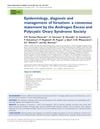 378 citations
,
November 2011 in “Human reproduction update”
378 citations
,
November 2011 in “Human reproduction update” Experts recommend using evidence-based methods to diagnose and treat hirsutism, focusing on symptoms and underlying causes.
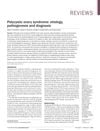 991 citations
,
January 2011 in “Nature Reviews Endocrinology”
991 citations
,
January 2011 in “Nature Reviews Endocrinology” The document concludes that PCOS is a complex disorder caused by both genetic and environmental factors, affecting women's health in various ways, and requires personalized treatment.
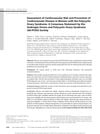 815 citations
,
April 2010 in “The Journal of Clinical Endocrinology & Metabolism”
815 citations
,
April 2010 in “The Journal of Clinical Endocrinology & Metabolism” Women with PCOS should be screened for heart disease risk and manage their health to prevent it.
 1540 citations
,
October 2008 in “Fertility and Sterility”
1540 citations
,
October 2008 in “Fertility and Sterility” The report concludes that PCOS is mainly a condition of excess male hormones and its definition may change as new information is discovered.
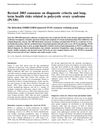 4025 citations
,
December 2003 in “Human Reproduction”
4025 citations
,
December 2003 in “Human Reproduction” The 2003 consensus updated PCOS diagnosis criteria and linked PCOS to higher risks of diabetes and heart problems, recommending lifestyle changes to lower these risks.
 24 citations
,
February 2022 in “Reviews in Endocrine and Metabolic Disorders”
24 citations
,
February 2022 in “Reviews in Endocrine and Metabolic Disorders” Women with PCOS have a higher risk of severe COVID-19 due to related health issues.
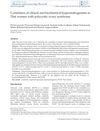 14 citations
,
February 2016 in “Journal of Obstetrics and Gynaecology Research”
14 citations
,
February 2016 in “Journal of Obstetrics and Gynaecology Research” Blood tests are needed to confirm high male hormone levels in women with PCOS, as physical signs alone are not reliable.
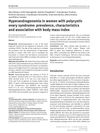 19 citations
,
January 2017 in “Hormone Molecular Biology and Clinical Investigation”
19 citations
,
January 2017 in “Hormone Molecular Biology and Clinical Investigation” High levels of male hormones are very common in women with PCOS and affect their metabolism differently depending on their weight.
 15 citations
,
October 2011 in “Gynecological Endocrinology”
15 citations
,
October 2011 in “Gynecological Endocrinology” Obesity changes androgen levels in women with PCOS, leading to higher testosterone relative to androstenedione.
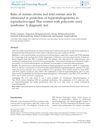 7 citations
,
September 2014 in “Journal of Obstetrics and Gynaecology Research”
7 citations
,
September 2014 in “Journal of Obstetrics and Gynaecology Research” Ultrasound measurement of the ovarian stroma to total area ratio is not a reliable single predictor of high male hormone levels in Thai women with PCOS, but works better when combined with clinical signs.










